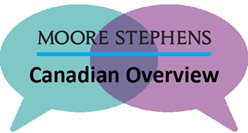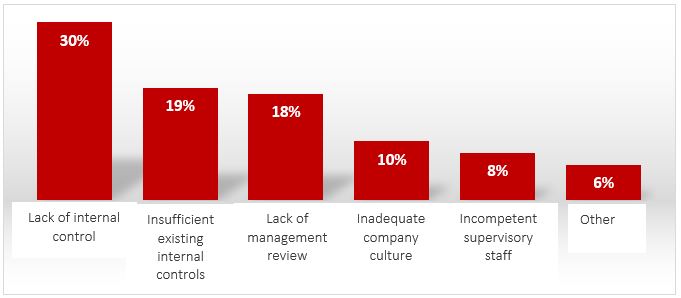 This article is from the quarterly Canadian Overview, a newsletter produced by the Canadian member firms of Moore Stephens North America. These articles are meant to pursue our mission of being the best partner in your success by keeping you aware of the latest business news.
This article is from the quarterly Canadian Overview, a newsletter produced by the Canadian member firms of Moore Stephens North America. These articles are meant to pursue our mission of being the best partner in your success by keeping you aware of the latest business news.
No companies are safe from fraud, no matter how big they are or what industry they’re in. According to the
International Trade Council, 5 per cent of revenues (representing US$800 billion worldwide) are lost to internal or external fraud.
The most common fraud tactics include corruption, misappropriation of assets, and financial statement fraud. And with cybercrime on the rise (the Online Trust Alliance reported an
18.2 per cent in reported breaches in 2017 compared to 2016), fraud prevention and detection measures are becoming more and more important.
The various costs of fraud
In Canada, the total financial losses due to fraud
[1] have reached an average of $200,000 in 2018. It should be noted that this average may be under-estimated, especially because a lot of fraud goes undetected by companies, and some firms are too embarrassed to report fraud — especially if it came from an internal source.
Organizations without effective fraud prevention and detection measures expose themselves to serious consequences that go beyond cost: it could affect employee morale, the company’s reputation, business relationships, and share price. All that to say that the cost of establishing a fraud prevention and detection system are almost always going to be lower than the cost of not establishing one.
Fraud detection methods
While there are many fraud prevention and detection measures a company can take other than a system, including employee education, a culture of honesty and third-party support in this area, a system is considered the most effective detection measure, with an effective rate of nearly 50 per cent
[2], as demonstrated by these 2018 findings on the reasons for fraud compiled by StatsCan.
[3]
 The forensic accountant’s role
The forensic accountant’s role
A forensic accountant familiar with the specific risks in your industry can help you establish an effective system. They know fraudsters’ tricks, how to detect them and how to create a system that neutralizes them.
Contact us to learn more about setting up a fraud prevention and detection system specifically for your company.
Contributed by
Jacqueline Lemay, CPA, CA, CA-EJC, CFF, from
Demers Beaulne. This piece was produced as a part of the quarterly Canadian Overview, a newsletter produced by the Canadian member firms of Moore Stephens North America.
[1] According to cases included in the Report of the Nations – 2018 Global Study on Occupational Fraud and Abuse, Association of Certified Fraud Examiners (hereinafter “ACFE”).
[2] Statistics Canada, Fraud Against Businesses in Canada: Results from a National Survey, by Andrea Taylor-Butts and Samuel Perreault, 2007-2008.